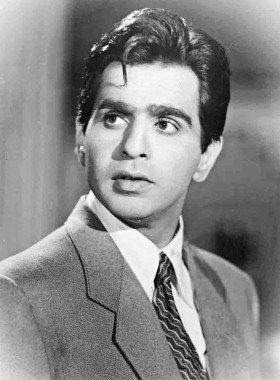




















Saturday, Jul 10, 2021 07:45 [IST]
Last Update: Saturday, Jul 10, 2021 02:11 [IST]
Md. Yusuf Khan or Dilip Kumar who breathed his last at the age of 98 years in the early hours of a sultry 7th July, could be unquestionably considered as the first super star who dominated, rather ruled the Mayanagri of Bombay for 54 long years. No other actor, not even Rajesh Khanna would come close to him.
An unassuming actor, par excellence, his contribution to Indian cinema was extraordinary.
There wasn’t a role he didn’t play with an elan -tragedy, romantic hero, comedy or historical icons.
Known popularly as the first Khan or Yusuf Saheb, he was born on 11th December 1922 in Peshawar. He was blessed in the prized company of eleven siblings.
His father, being an orchard owner both at Peshawar and Nashik, preferred keeping him in Barnes school, Nashik. Subsequently, he tried his hand at selling sandwich.
His foray in filmdom began with his introduction in 1943 to Devika Rani, reigning star and owner of Bombay Talkies. He also came in touch with Ashok Kumar, another star on the horizon.
His impressive Urdu and English made him a script writer. Prior to making his debut in Jwar Bhata in 1944, he did not forget to change his name to Dilip Kumar, presumably under the influence of Devika.
Becoming popular with Jugnu in 1947, he gave two popular films-Saheed and Mela.But Andaz in 1949 proved a true turning point when he acted with confidence with Raj Kapoor and Nergis, other famous stars. Two films in 1955-Insaniyat with Dev Anand and Devdas with Suchitra Sen made him a household name.
The 1957 film Naya Daur, followed by 1958 block busters-Yahudi and Madhumati not only added new feathers to his glittering cap but he climbed to the Dizzy heights.
Sooner than later, he established his solid image as a tragedy king and became the first actor to be conferred with the first Filmfare award for Daag. He went on to win this award 7 times more.
In 1950 he became the first actor to charge Rs. One lakh for a film. Sensing his fading status, he rightly took a break for five years in 1976 to re-emerge again as a force to reckon with as a Character artist in Mega films such as, Kranti, Vidhata, Shakti, Karma and Saudagar.
All good things come to an end and Dilip sahib could not remain in galaxy of stars forever. Having compromised with loss of glamour, his last appearance was in Qila, a non-descript movie. His last two films are yet to see light of the day.
Last couple of years he ran into inclement weather to face property related issues with neighbours etc. concerning his 2400 sq.metre area bungalow (currently priced Rs
350 Crores) located at extra posh Pali Hill area of Bandra in Mumbai.
His second marriage with Asma Rahman in 1981 was a sad and short lived affair. His first and present surviving spouse Saira Bano could not cope with it.
I began watching Hindi films in 1967 and the first one in this order was hugely successful film Ram Aur Shyam in which Dilip Kumar had a memorable double role. The number one villain of this era Pran gave remarkable performance too, so much so that if he was sighted outside the Ratan Talkies of Ranchi, he would have been thrashed by my feeble hands.
His friendship with S.N. Ganguli ,owner of three cinema halls in Ranchi resulted into another hit in form of Sagina Mahto, a bi-lingual film .It was preceded by Ganga Jamuna and followed by Gopi.
His restrained portrayal of Prince Salim together with fine performances by Prithviraj Kapoor and Madhubala in K.Asif 's magnum opus "Mughl-e-Azam" made the movie the highest earning one for eleven years.
Originally a black & white venture, it was turned into a coloured film in 2004 and was re-released as well.
Talking of much subdued heroines of the era, Dilip Saheb gave seven hits in the company of accomplished Vyjayanthimala during his hey days. All the then top heroines,namely, Madhubala, Negis, Waheeda Rahman, Mala Sinha and Saira Bano shared screen space with him.
Drawing a comparison with the tough time faced by Rajesh Khanna, another super star at the last phase of their career may appear relevant. Dilip Saheb, apparently never used to divulge his miseries in being child less or suffering from Bronchial Pneumonia, advanced Prostate Cancer & kidney ailments but he was suffering always from within. On the contrary, Rajesh Khanna after departure of Dimple would find company in drinks and women, so much so that he was viewed married only for namesake.
Dilip Saheb, on the contrary, despite acting in sixty five films and facing competition from many talented artists of his era, kept his morale, image and standards high.
A world without the thespian may appear isolated and barren. It may be difficult, if not impossible to fill the void.
(The writer is former Chief Secretary, Government of Sikkim)
